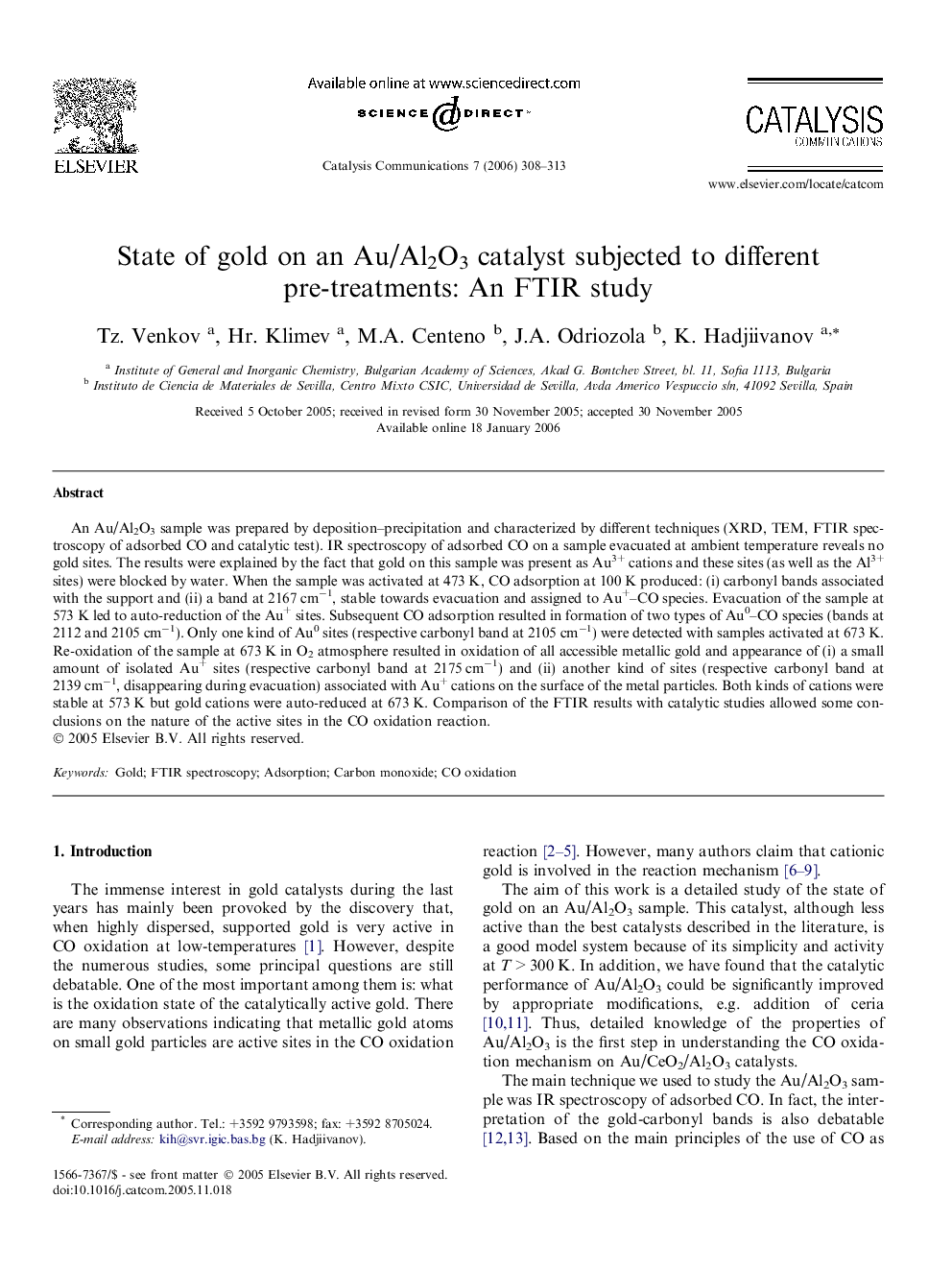| Article ID | Journal | Published Year | Pages | File Type |
|---|---|---|---|---|
| 53040 | Catalysis Communications | 2006 | 6 Pages |
An Au/Al2O3 sample was prepared by deposition–precipitation and characterized by different techniques (XRD, TEM, FTIR spectroscopy of adsorbed CO and catalytic test). IR spectroscopy of adsorbed CO on a sample evacuated at ambient temperature reveals no gold sites. The results were explained by the fact that gold on this sample was present as Au3+ cations and these sites (as well as the Al3+ sites) were blocked by water. When the sample was activated at 473 K, CO adsorption at 100 K produced: (i) carbonyl bands associated with the support and (ii) a band at 2167 cm−1, stable towards evacuation and assigned to Au+–CO species. Evacuation of the sample at 573 K led to auto-reduction of the Au+ sites. Subsequent CO adsorption resulted in formation of two types of Au0–CO species (bands at 2112 and 2105 cm−1). Only one kind of Au0 sites (respective carbonyl band at 2105 cm−1) were detected with samples activated at 673 K. Re-oxidation of the sample at 673 K in O2 atmosphere resulted in oxidation of all accessible metallic gold and appearance of (i) a small amount of isolated Au+ sites (respective carbonyl band at 2175 cm−1) and (ii) another kind of sites (respective carbonyl band at 2139 cm−1, disappearing during evacuation) associated with Au+ cations on the surface of the metal particles. Both kinds of cations were stable at 573 K but gold cations were auto-reduced at 673 K. Comparison of the FTIR results with catalytic studies allowed some conclusions on the nature of the active sites in the CO oxidation reaction.
